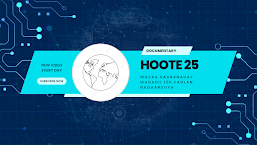# Cybersecurity: Protecting Digital Assets in the Modern World
## Introduction
In today's digital age, cybersecurity has become a critical concern for individuals, businesses, and governments alike. With the increasing reliance on digital technologies for communication, commerce, and data storage, the risk of cyber threats has grown exponentially. Cybersecurity encompasses a range of practices, technologies, and policies designed to protect digital assets from unauthorized access, theft, and damage.
## The Importance of Cybersecurity
Cybersecurity is essential for several reasons:
1. **Protection of Sensitive Information**: Cybersecurity measures help safeguard sensitive information, such as personal data, financial records, and intellectual property, from unauthorized access and theft.
2. **Prevention of Cyber Attacks**: Cybersecurity measures help prevent cyber attacks, such as malware, ransomware, and phishing, which can disrupt operations, steal data, and cause financial losses.
3. **Compliance with Regulations**: Many industries are subject to regulations that require them to implement cybersecurity measures to protect customer data and ensure privacy.
4. **Preservation of Trust**: A strong cybersecurity posture helps build trust with customers, partners, and stakeholders, as it demonstrates a commitment to protecting their data and privacy.
## Common Cybersecurity Threats
There are several common cybersecurity threats that individuals and organizations need to be aware of:
1. **Malware**: Malware is malicious software designed to infiltrate and damage computer systems. Common types of malware include viruses, worms, and Trojans.
2. **Ransomware**: Ransomware is a type of malware that encrypts files on a victim's computer and demands payment in exchange for the decryption key.
3. **Phishing**: Phishing is a type of cyber attack where attackers use fraudulent emails, websites, or messages to trick individuals into providing sensitive information, such as passwords or credit card numbers.
4. **Data Breaches**: Data breaches occur when unauthorized individuals gain access to sensitive information, such as customer data or financial records.
5. **Denial of Service (DoS) Attacks**: DoS attacks are designed to disrupt the normal functioning of a computer system or network by overwhelming it with a flood of traffic.
## Cybersecurity Best Practices
To protect against cyber threats, individuals and organizations should follow cybersecurity best practices:
1. **Use Strong Passwords**: Use complex passwords that are difficult to guess and change them regularly.
2. **Enable Two-Factor Authentication**: Two-factor authentication adds an extra layer of security by requiring a second form of verification, such as a code sent to a mobile device, in addition to a password.
3. **Keep Software Updated**: Regularly update software and operating systems to patch vulnerabilities and protect against known threats.
4. **Be Cautious of Suspicious Emails**: Be wary of emails from unknown senders or with suspicious attachments or links, as they may be phishing attempts.
5. **Backup Data Regularly**: Regularly backup important data to an external hard drive or cloud storage service to protect against data loss in the event of a cyber attack.
6. **Use a Firewall**: A firewall helps protect against unauthorized access to a computer or network by monitoring incoming and outgoing traffic.
7. **Educate Employees**: Educate employees about cybersecurity best practices and the importance of protecting sensitive information.
## Conclusion
Cybersecurity is a critical concern in today's digital age, as cyber threats continue to evolve and become more sophisticated. By following cybersecurity best practices and implementing robust security measures, individuals and organizations can protect their digital assets and reduce the risk of cyber attacks.


.jpeg)


.jpg)
0 Comments